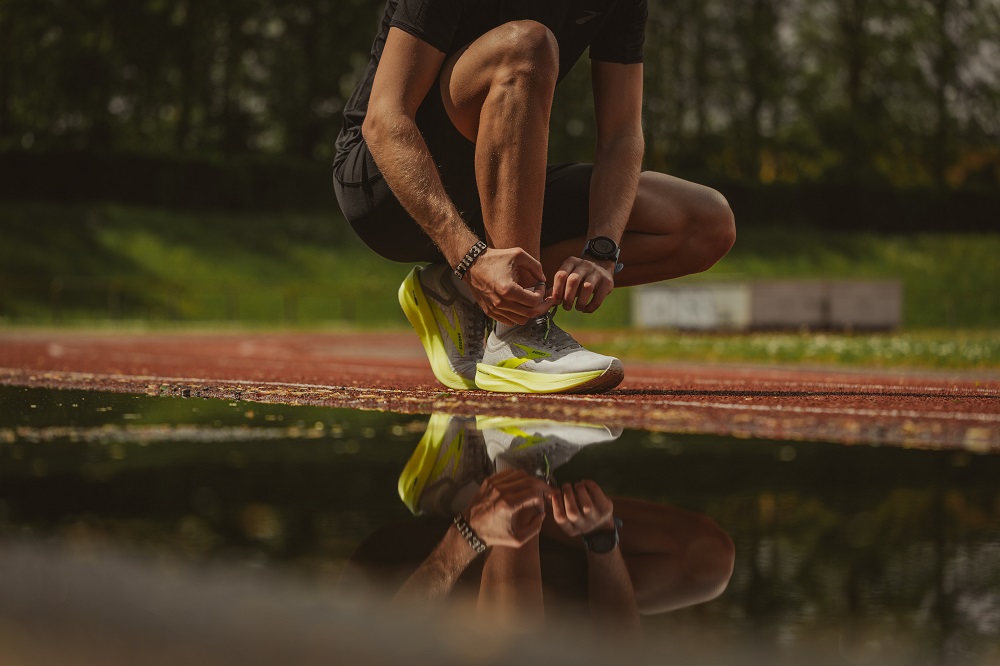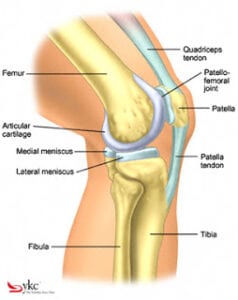Revised May 2021
Patellofemoral syndrome refers to pain arising from the joint between the kneecap and the underlying thigh bone (femur). Other names for this condition include patellofemoral pain syndrome, Chondromalacia Patella, Movie-goers knee, Anterior knee pain and runner’s knee.
How does it happen?
Patellofemoral syndrome most often results from overuse of the knee. When the knee is bent and straightened, the kneecap (patella) slides up and down within a groove on the end of the thighbone (trochlea of the femur). Increased load on the patellofemoral joint instigates the development of patellofemoral pain. There are extrinsic (external to your body) and intrinsic (inside your body) factors that are thought to increases the forces on the kneecap.
Extrinsic Factors:
An individual can increase the load on their patellofemoral joint by;
- Increasing training volumes (e.g. increased distance or frequency of exercise)
- Increasing their running or walking speed
- Changing footwear or the surface that they train on
- Adding hills/stairs to their exercise
- Adding jumping sports e.g. basketball, volleyball
- Increasing prolonged kneeling e.g. gardening
- Increasing body weight, or training with weights, such as squats and lunges
Intrinsic Factors
Intrinsic factors can influence both the size of the force, and the distribution of the load, on the patellofemoral joint. The distribution of the load can be affected by the way the kneecap tracks (moves) within its’ groove on the thigh bone. Patella mal-tracking, where the patella moves excessively towards the outside of the groove during knee bending/straightening, can concentrate the load onto a smaller area on the under surface of the kneecap. This may overload the patellofemoral structures sufficiently to initiate a painful process. Some causes of patellofemoral mal-tracking include;
- Inward rotation of the thigh bone, or shin bone. This can be caused by weak muscles around the hip, knee and pelvis (which can be corrected by strengthening), or it may be due to the actual bony structure.
- Increased subtalar pronation – “flat feet”
- Tight soft tissues around the kneecap, which ‘pull’ the kneecap outwards
- Poor quadriceps (front thigh muscles) control. This can be due to general quadriceps weakness, an imbalance in strength between the the inside (VMO) and outside (VL) muscles, or “misfiring” of the VMO compared to the VL.
With repeated bending and straightening, such as during activities involving walking, running, jumping and cycling, the underneath surface of the kneecap can become irritated when patella mal-tracking is present.
How does it feel?
The main sensation associated with patellofemoral syndrome is pain. This can be felt behind and around the kneecap. Patellofemoral syndrome is commonly aggravated by walking, running, going downstairs or sitting for a prolonged period with a bent knee. Associated with this pain may be grinding noises when the knee is bent or straightened, a sensation of the knee giving way and weakness in the knee. The knee may also swell at times.
What you should do
Patellofemoral syndrome frequently does not get better on its own if the cause is not addressed and you continue your activity or sport. If you have or suspect you have patellofemoral syndrome, you should consult your physiotherapist. In the meantime, you should avoid any activities which aggravate or cause your knee pain to occur. Icing the front of your knee will be of benefit. Ice should be applied to the injured area for 15-20 minutes every 1-2 hours. Ideally, it should be applied using crushed ice wrapped in a moist cloth or towel.
What shouldn’t you do
If you have or suspect you have patellofemoral syndrome, you shouldn’t ignore the problem. This may lead to your problem getting worse such that your pain becomes more severe and is felt more frequently. This can also cause the problem to become entrenched, and much harder to correct. In a prospective study of 63 women with patellofemoral pain, symptoms persisted in 94% at 4 years. This underscores the value of early, comprehensive treatment.
Could there be any long term effects?
Patellofemoral syndrome does not produce any long-term effects as long as it is properly diagnosed and appropriately treated. Recovery can take anywhere from just a number of weeks for a single episode of knee pain, to many months for chronic patellofemoral pain.
Management
It is vital that you do not participate in activity that aggravates your pain during the treatment period, as this can significantly delay your recovery time.
Unfortunately there is no “recipe” for treatment of patellofemoral pain, as the cause of patellofemoral pain is often multi-factorial (which means there may be many contributing factors to the injury). This means your treatment may be completely different from someone else with the same condition.
Your physiotherapist will perform a thorough assessment, and from this, will be able to determine an appropriate treatment plan. This may involve initial activity modification, soft tissue treatment such as massage and stretching, taping or bracing of the kneecap and specific knee and hip strengthening exercises to improve kneecap movement (tracking).
Your physiotherapist will also be able to assess and determine why you developed patellofemoral syndrome and address this during your recovery to prevent a re-occurrence when you return to exercise and sport.









